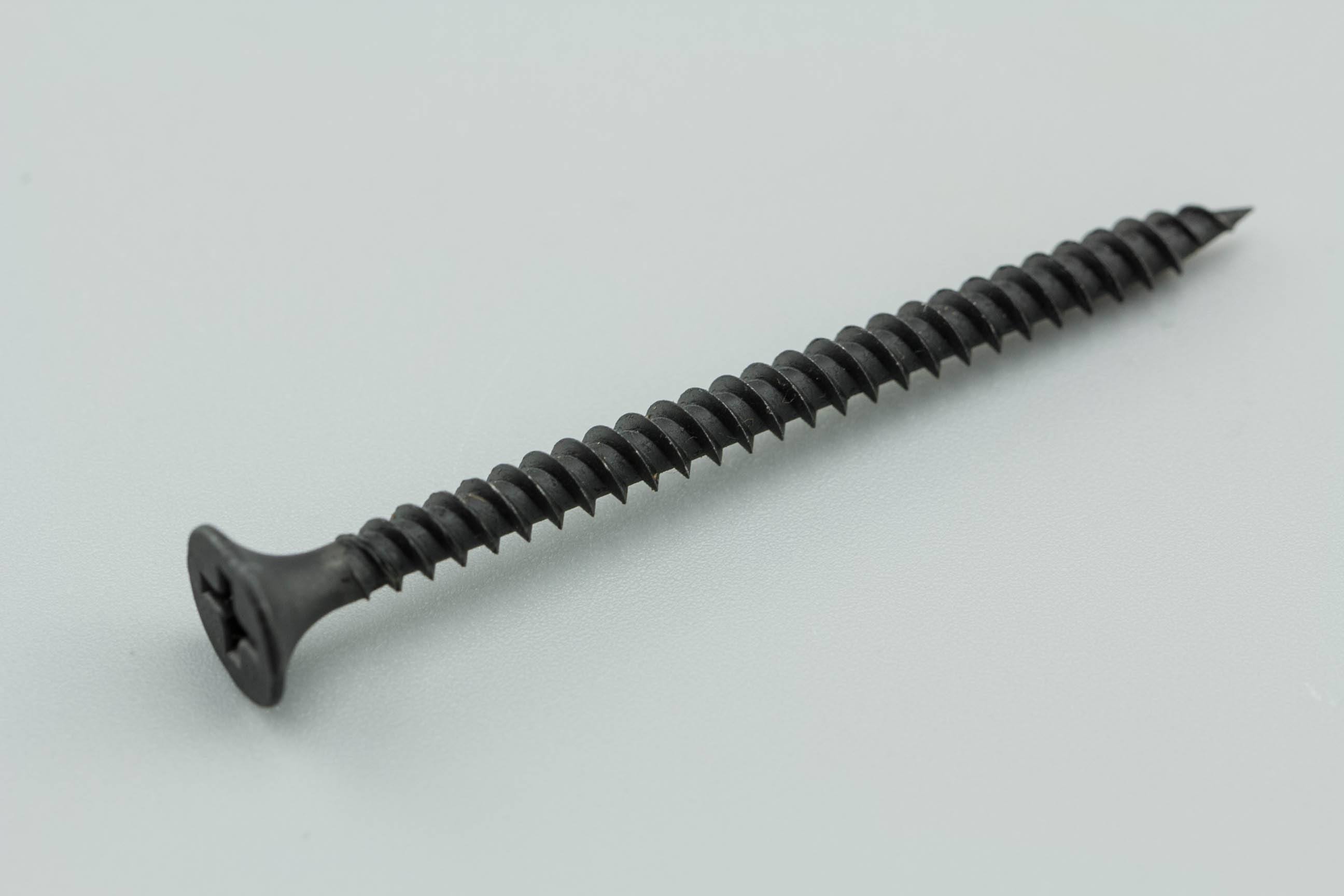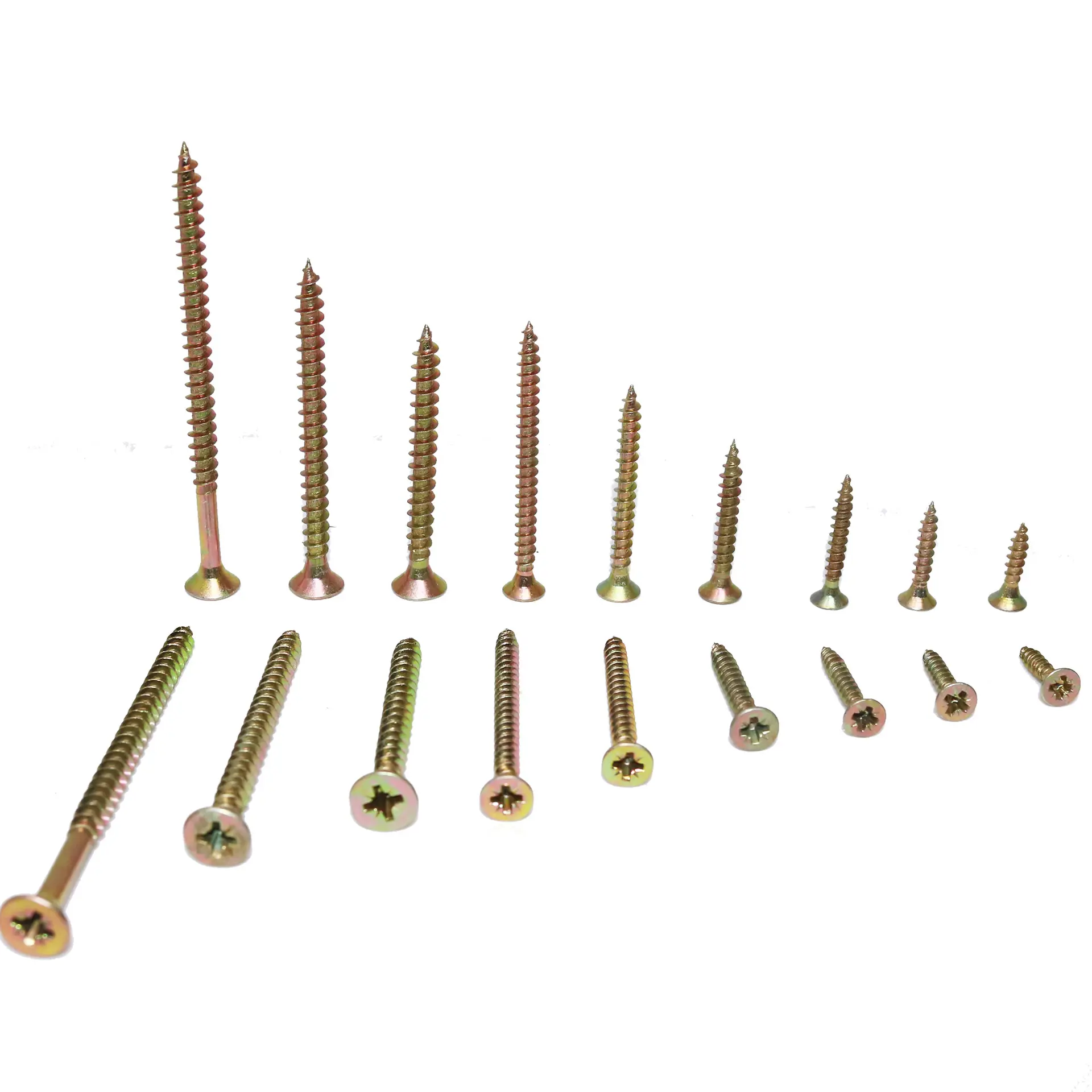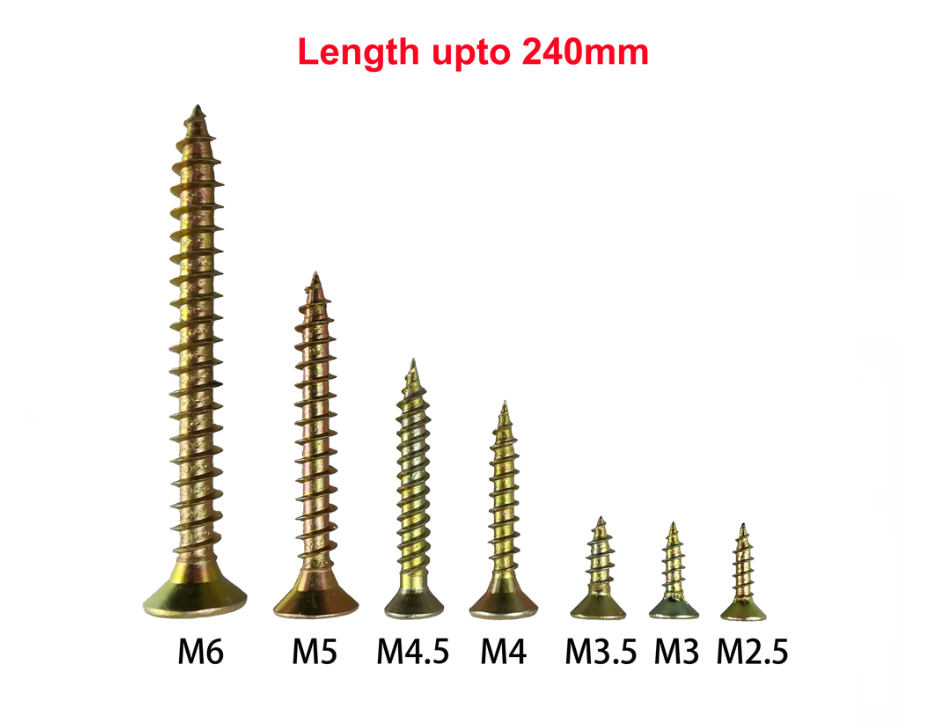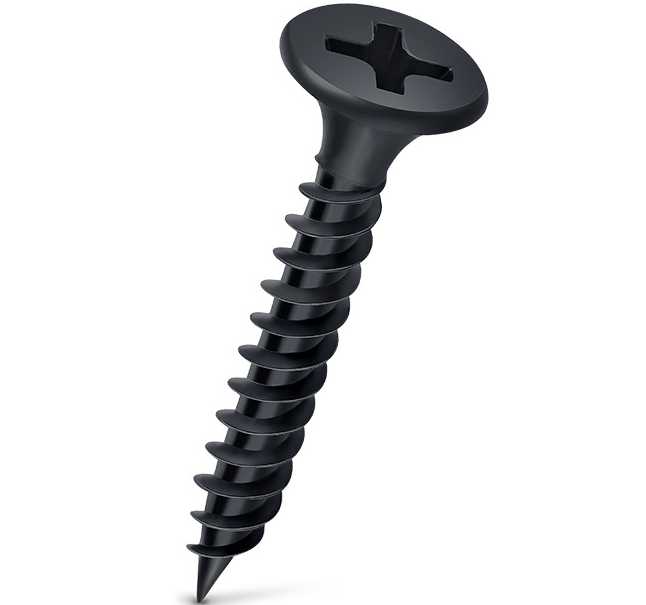OTHER SCREWS
Drywall screw is a kind of screw specially used to fix gypsum board (drywall) to wooden or metal frame. It usually has a thin stem and a sharp tip, which is convenient to directly penetrate the gypsum board and drill into the frame. The head design of drywall screws is varied, such as flat head, round head and countersunk head. For example, after installation, the head of countersunk drywall screws can be flush with the surface of gypsum board or slightly lower than the surface, which is convenient for subsequent wall treatment, such as scraping putty and pasting wallpaper.
Chipboard screws are special screws for fixing chipboard materials. Its stem is relatively thin and smooth, because the texture of chipboard is soft and does not need strong thread bite force as in wood or metal. Its tip is also sharp, which is convenient to penetrate chipboard. The head of the chipboard screw is usually small, and there are two common forms: flat head and round head, which can reduce the influence on the surface after fixing the chipboard and avoid damaging the chipboard because the head is too large.
-

Drywall screws are specifically designed for fastening plasterboard to either metal or timber. Typically, drywall screws are light and have deeper threads designed to help the screws stay in place against the drywall.
-

Chipboard screws feature a slim shank with a very coarse thread that digs deeper and more tightly into the timber. In other words, more timber or composite board is embedded in the thread, creating an extremely firm grip. Zinc plated csk wood screw Pozi Drive Double CSK Head Screw
-

Drywall screws are specifically designed for fastening plasterboard to either metal or
-

Chipboard screws feature a slim shank with a very coarse thread that digs deeper and more tightly into the timber. In other words, more timber or composite board is embedded in the thread, creating an extremely firm grip. Zinc plated csk wood screw Pozi Drive Double CSK Head Screw
-

Drywall screws also called Gypsum Board Screw are specifically designed for fastening plasterboard to either metal or timber. Typically, drywall screws are light and have deeper threads designed to help the screws stay in place against the drywall.
Differences Between Drywall Screws and Chipboard Screws in Structure
Rod and tip
Drywall screw: The stem is thin, mainly for the convenience of penetrating gypsum board. Its sharp tip makes it possible to penetrate the gypsum board and the frame material behind it quickly and relatively easily. For example, when installing drywall, this sharp tip can directly penetrate the gypsum board and enter the wooden or metal frame, reducing the resistance during installation.
Chipboard screws: The stem is also thinner, but it may be thinner than drywall screws, because chipboard is softer and does not need a thick stem to provide support. The tip is also sharp, which is convenient to penetrate into the chipboard, but because the chipboard is thin and soft, the force required for the tip to penetrate is less than that of the drywall screw.
Screw thread
Drywall screws: Usually coarse thread. This coarse thread can provide strong bite force in gypsum board and frame materials (such as wood or metal). When the screw is screwed in, the coarse thread can better grasp the material, ensure that the gypsum board is firmly fixed on the frame and prevent it from loosening due to vibration or slight collision in daily use.
Chipboard screw: The thread is relatively fine. Because the chipboard is soft, fine threads can provide enough fixing force without tearing the chipboard excessively. If the thread is too thick, it is easy to tear the chipboard during screwing in, which will affect the fixing effect and the integrity of the chipboard.
Head design
Drywall screws: There are various head designs, such as flat head, round head and countersunk head. After installation, the head of countersunk drywall screw can be flush with the surface of gypsum board or slightly lower than the surface, which is convenient for subsequent wall treatment, such as scraping putty and pasting wallpaper. Round head or flat head drywall screws may be used in some occasions where fine wall treatment is not needed, or for fixing parts with special requirements.
Chipboard screws: the head is usually small, and the common ones are flat head and round head. The smaller head can reduce the influence on the surface of the chipboard and avoid damaging the chipboard because the head is too large. In some chipboard products (such as display stands and packaging boxes) which require high appearance, the design of this small head can make the surface of the fixed chipboard more neat and beautiful.
Differences Between Drywall Screws and Chipboard Screws in Materials
Main material types
Drywall screws: mainly made of carbon steel. Some drywall screws will be galvanized to enhance their corrosion resistance. In the building environment, there may be some humidity or other corrosive factors around gypsum board. Galvanizing treatment can prolong the service life of drywall screws and ensure them to fix gypsum board effectively for a long time.
Chipboard screws: Generally, the material is also carbon steel, but compared with drywall screws, its quality is lighter. This is because the fixation of chipboard usually does not need to bear a large external force like gypsum board, so it is not necessary to use heavy and high-strength materials to make screws.
Differences Between Drywall Screws and Chipboard Screws in Performance
Pull-out resistance
Drywall screws: Good pull-out resistance is required. In the process of use, gypsum board may be subjected to various external forces, such as hanging heavy objects on the wall, collision and so on. Drywall screws should be able to firmly fix gypsum board and prevent it from pulling out of the frame to ensure the stability and safety of the wall.
Chipboard screws: Because chipboard is mainly used in some light application scenarios, such as making packaging boxes and display racks, the requirements for its pull-out resistance are relatively low. However, when fixing the chipboard, it is also necessary to ensure that the screws can maintain the connection state of the chipboard during normal use and handling.
Adaptability to deformation
Drywall screws: to some extent, it is necessary to adapt to the slight deformation of gypsum board. For example, in the case of environmental humidity change or slight settlement of buildings, the gypsum board may be slightly deformed, and the drywall screws should be able to maintain the fixing effect in this case without loosening or damaging the gypsum board due to deformation.
Chipboard screw: It needs good flexibility to adapt to the slight deformation of chipboard in different environments (such as humidity change). Because the chipboard itself is soft and easily deformed by environmental factors, the chipboard screws should be able to maintain a fixed state with the deformation of the chipboard without breaking the chipboard.
Application scenario
Drywall screws: mainly used for gypsum board installation in building interior decoration, including wall and ceiling decoration. Drywall screws are used in the interior decoration of family houses, offices or commercial places as long as it involves the fixation of gypsum boards.
Chipboard screws: the application scenarios are mainly light products such as packaging boxes, display racks and hand-made models made of chipboard. These products need to be fixed in the process of making chipboard, and chipboard screws can provide effective fixation without destroying the appearance and structure of chipboard.



